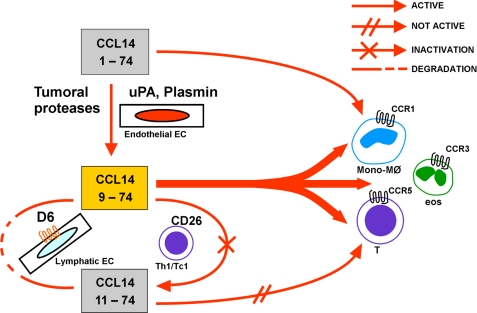FIGURE 7.
Model of CCL14 activation and inactivation. CCL14(1–74) is a homeostatic chemokine present at high concentrations in the serum with a weak activity on CCR1. Under inflammatory conditions, CCL14(1–74) is activated by proteases of the coagulation and fibrinolytic systems that cleave the first 8 N-terminal amino acids and generate the CCL14(9–74) isoform, a strong agonist of CCR1, CCR3, and CCR5. CCL14(9–74) is then inactivated by two distinct mechanisms. The serine protease CD26, expressed by Th1 lymphocytes, removes two N-terminal amino acids and generates the inactive CCL14(11–74) isoform; the chemokine decoy receptor D6, expressed by lymphatic vessels, internalizes and degrades CCL14(9–74) with high efficiency. D6 also binds and degrades CCL14(11–74) but with lower efficiency as compared with CCL14(9–74).

